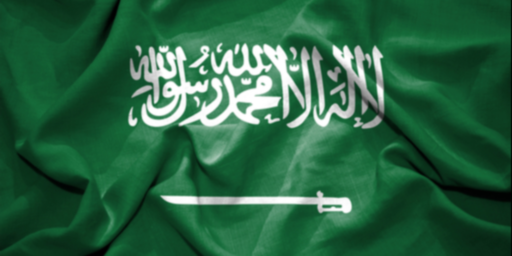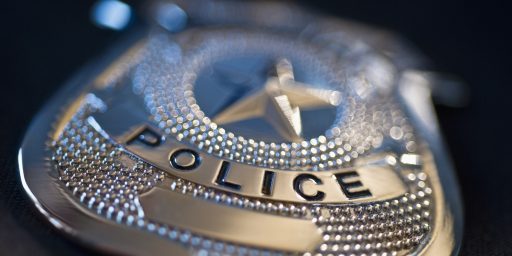U.S. Rethinking Iraq Counterinsurgency Tactics
U.S. commanders are shifting their efforts toward the jihadist terrorist element of the insurgency rather than the Baathist dead enders.
U.S. Officers In Iraq Put Priority on Extremists (WaPo, A1)
Senior U.S. commanders say their view of the Iraqi insurgency has begun to shift, with higher priority being given to combating foreign fighters and Iraqi jihadists. This shift comes in response to the recent upsurge in suicide attacks and other developments that indicate a more prominent role in the insurgency by these radical groups, the commanders say. Previously, U.S. authorities have depicted the insurgency as being dominated largely by what the Pentagon has dubbed “former regime elements” — a combination of onetime Baath Party loyalists and Iraqi military and security service officers intent on restoring Sunni rule. But since the Jan. 30 elections, this segment of the insurgency has appeared to pull back from the fight, at least for a while, reassessing strategies and exploring a possible political deal with the new government, senior U.S. officers here say.
Acting on the assumption that foreign fighters and Iraqi extremists may now pose the greater and more immediate threat to security in Iraq, U.S. commanders have given orders in recent days to reposition some U.S. ground forces and intelligence assets in northwestern Iraq to further fortify the border with Syria and block suspected infiltration routes. They are also stepping up efforts to go after leading bomb-makers and key organizers of the suicide attacks.
In interviews, several commanders and intelligence officers cautioned that their shift was still tentative and based more on fragmentary information and intuition than on solid, specific evidence. They said assessments differed among U.S. intelligence specialists. But supporting the impression that a harder-core insurgent element has become more important, the officers say, is the fact that suicide missions have become more frequent and more ruthless — many have been positioned and timed to kill civilians as well as Iraqi security forces. U.S. and Iraqi authorities say suicide drivers are invariably foreign fighters. Officers here said they knew of no documented case in which a suicide attacker turned out to have been an Iraqi.
One hopes this isn’t a recent shift. It’s been rather obvious from reading press accounts that the jihadist terrorist element was the most critical. Locals angry at the American occupation wouldn’t be targetting Iraqis and even the most deluded Baathists have to realize Saddam isn’t coming back at this point.
A piece in yesterday’s edition provides interesting background:
What Do the Insurgents Want? (B1)
The 60-wheel trailer was carrying a giant power generator on the highway to Musayyib, 30-odd miles south of Baghdad, last week. Guarded by six cars carrying police and the Iraqi National Guard, the convoy was passing along the notorious Baghdad road near Lutifiyah, a hotbed of insurgent activity where many kidnappings and attacks on military and civilian cars take place.
A banner hung from the generator, like an amulet to ward off evil. Sprayed across it in big bold letters were the words: “To the Musayyib power plant. God is great. Long live the Mujaheddin.” The sign was an appeal to Iraq’s insurgents, urging them not to attack the convoy and deprive the people of Musayyib of electricity. Whether it was thanks to the banner, to luck, or to the absence of insurgents on the road that day, the generator and the 28 security personnel made it safely to their destination.
Like the people in that convoy, Iraqis are wondering why the diverse people known by the shorthand phrase “insurgents” continue to attack and what they hope to achieve. In the week since a new cabinet was formed, about 250 Iraqis have been slaughtered in car bombings and other bloody attacks, a pace as relentless and heartless as any since the fall of Saddam Hussein more than two years ago. And while on the ground the attacks seem indiscriminate, there is a strategy behind them.
In fact, there’s more than one. That’s because the insurgents are actually several groups of people who might share tactics, but possess different motivations and long-term objectives. Thus the appeal on the side of the generator in transit might have had an effect with one group of the insurgency: those who were fired from their jobs in the military and other government institutions for being members of the Baath party but who don’t really believe in Saddam Hussein’s doddering old brand of Arab socialism. But two other important factions of the insurgency — the die-hard Baathists and the pro-al Qaeda Islamist militants — would not hesitate to attack what they would see as a perfect target: a giant generator, 12 policemen and 16 Iraqi national guardsmen. Promoting instability by disrupting public services and crippling the security apparatus of the new Iraq is the heart of their strategy.
Understanding the different strains of the insurgency is essential to fighting them. Two years after the war and three months after national elections that appeared to be a referendum in favor of peaceful politics, the violent insurgents remain an unyielding stumbling block in the path to a new Iraq. The country can never move ahead until this revolt is dealt with decisively.
The backbone of the insurgency appears to be an alliance between the die-hard Baathists and the network of terrorists mostly under the command of Abu Musab Zarqawi. It is a partnership of convenience; both groups are fighting the same battle, but for different reasons and with different goals.
The terrorists are more motivated and better financed. The Iraqi military ought to be able to beat back the Baathists on their own.




This one’s a bit hard to square with the Chicago Sun-Times story on the current operation, which alleges that whole towns are using their houselights so as to signal the approach of American troops. IMHO, the POST story is the Pentagon “playing nice” with the Jafaari team’s efforts to draw enough Sunni leaders into a government to avoid outright civil war. I can’t say I blame the Pentagon for spinning the foreign insurgents so hard, but it’s either that or the marines currently on the offensive in northwest Iraq are imagining things.